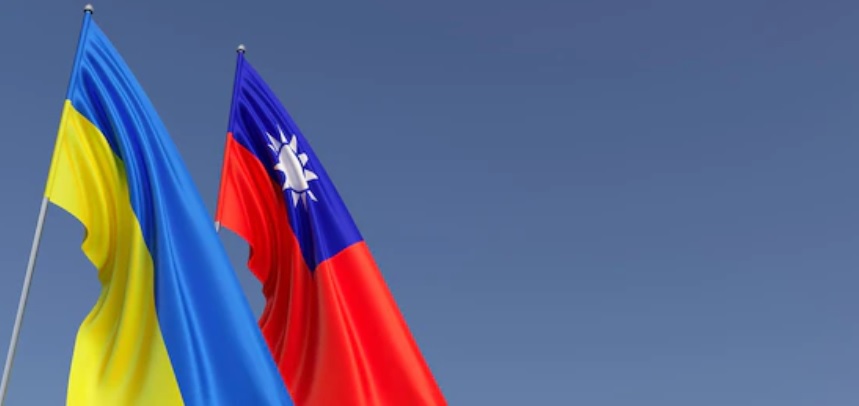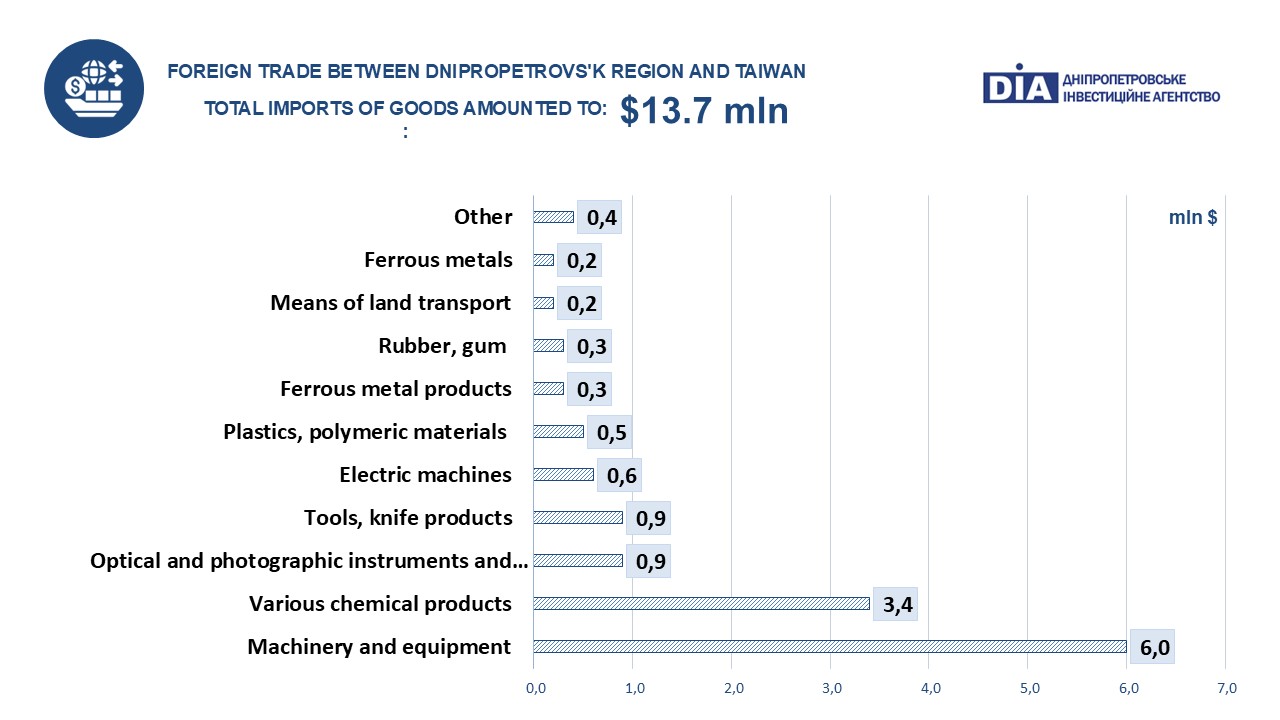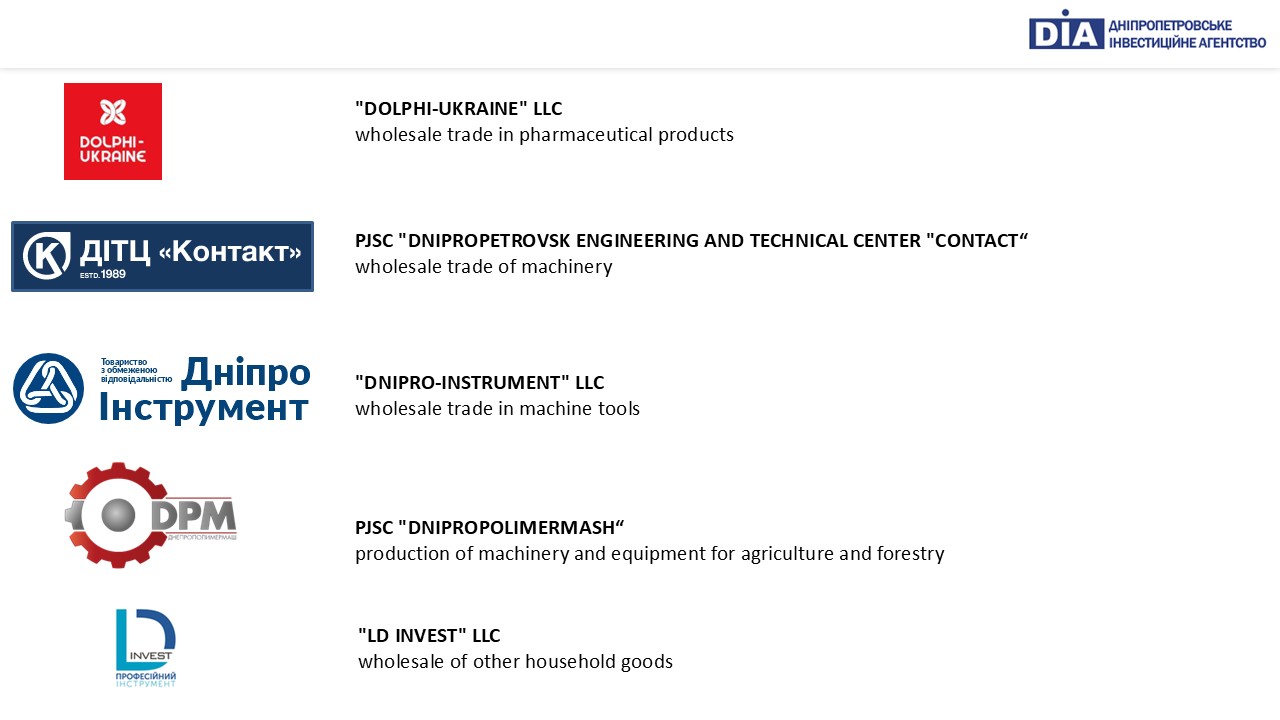Doing business

Taiwan actively supports Ukraine in its war against Russia, despite the lack of formal diplomatic relations between two countries. Support includes humanitarian aid, economic contributions, and symbolic solidarity.
Taiwan believes that Ukraine’s victory is the key to deterring authoritarian regimes in the world. Taiwanese officials often call on the international community to continue supporting Ukraine.
After Russia’s invasion of Ukraine, the government of Taiwan has joined other countries in condemning russia and imposing economic sanctions on it. Taiwan imposed restrictions on the export of high-tech semiconductors to russia, which had a negative impact on the russian economy. Taiwanese authorities have also announced a complete cessation of supplies to russia of machine tools that can be used in military enterprises. This demonstrates the solidarity of Taiwan with Ukraine in countering russian aggression.
In March 2023, Taiwan provided $33 million to assist Ukrainian refugees and rebuild cities, as well as funded the restoration of medical facilities. Also in 2024, the Taiwanese public donated more than $30 million in humanitarian aid to Ukraine. At the same time, the country provided $200 thousand to purchase basic necessities for “Okhmatdyt” and will continue to provide the necessary assistance.
Due to the financial support of Taiwan, Lithuania has implemented four projects in Ukraine with a total investment of $5.28 million. The assistance is focused on three key areas: reconstruction of educational infrastructure, training on safe handling of hazardous materials, and support for veterans in the process of rehabilitation and integration.
Taiwan also shows interest in Ukraine’s post-war recovery. It is planned to involve Taiwanese technology and know-how in reconstruction projects, which could strengthen cooperation between the countries in the areas of innovation and trade. Despite the limitations, both countries find common ground in economic and political cooperation, which has significant potential for future development. Taipei focuses on technology investments, while Kyiv, for its part, offers resources and opportunities for joint projects in agriculture and manufacturing
Foreign trade between Taiwan and Ukraine develops in various sectors, although its scale is relatively small due to political and geographical factors. The main exports between both countries are agricultural products and raw materials. Taiwan imports grain, corn, sunflower oil, and other agricultural products from Ukraine. It also imports ferrous metals, fertilizers, and pharmaceutical components. In turn, Taiwan supplies electronics, computer components, and other high-tech goods to Ukraine. Mutually beneficial trade and economic cooperation remains a top priority for bilateral relations.
The development of mutually beneficial trade and economic cooperation remains an important priority for Dnipropetrovsk region as well. Despite relatively small volumes of foreign trade, this country is a promising trading partner for our region.
Taiwanese companies are most interested in ferrous metal products, cocoa and cocoa products, stone and gypsum products, optical, photographic apparatus and devices, toys, etc. The volume of goods exports from Dnipropetrovsk region amounted to $698.9 thousand and increased almost 4 times compared to 2022.
5 companies in Dnipropetrovsk region exported their products to the Taiwanese market, including metallurgical enterprises and trade companies.

In turn, 225 importers in the region purchased Taiwanese goods, namely: machinery and equipment, various chemical products, machinery and equipment, optical, photographic, and other devices. Imports of goods from Taiwan to Dnipropetrovska oblast increased by 33% to $13.7 million.

TOP 5 importers in terms of imported products are the following companies:

Import operations were mainly carried out by chemical and processing companies and trade enterprises.

Source: information for the article was taken from open online sources